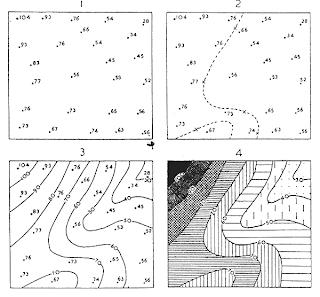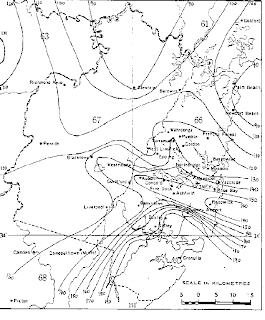 Continuously Variable Proportional Circle Map: A proportional circle map using circles that are in proportion to the variable being measured.
Continuously Variable Proportional Circle Map: A proportional circle map using circles that are in proportion to the variable being measured.Monday, June 30, 2008

Digital Orthophoto Quarter Quadrangle (DOQQ): A digital raster (pixel based ) image of an aerial photograph in which displacements caused by the camera and terrain have been removed through orthorectification. It combines the image qualities of a photograph with the geometric qualities of a map. A DOQ is either B&W or color infrared (CIR) and represents one USGS 7.5 minute quadrangle. A DOQQ is one quarter of the quadrangle, so the DOQ name is followed by SE, NE, SW, or NW. DOQQ scale is 1:12,000 or 1" = 1,000' .
Friday, June 27, 2008
Tuesday, June 24, 2008
Saturday, June 21, 2008
Wednesday, June 18, 2008

Cartographic Animation: The use of GIS and computer databases to create animated, changeable, interactive maps. This can include temporal animations, generalization animations (e.g. change of births), geographic trend animations (e.g. census data), and classification animations. This one shows the dates of African independence.

Statistical Map: A map in which the variation in the quantity of a factor such as rainfall, population, or crops in an area is indicated. A dot map is one type. In a statistical map each unit is represented by a shading or color that represents the value or range of values for that variable. The statistics shown on the map can express rates, ratios, percentages or other statistical measures. Values in the distribution must be mutually exclusive and exhaustive. This one is for a mining operation.
Wednesday, June 11, 2008
Tuesday, June 10, 2008

Propaganda map: In this case it was used to illustrate the danger of nuclear missles in Cuba. Propaganda is a concerted set of messages aimed at influencing the behaviors or opinions of large numbers of people. It uses disinformation or the selective presentation of information to create a false and usually emotionally manipulative mental map.
Thursday, June 5, 2008
Subscribe to:
Comments (Atom)























